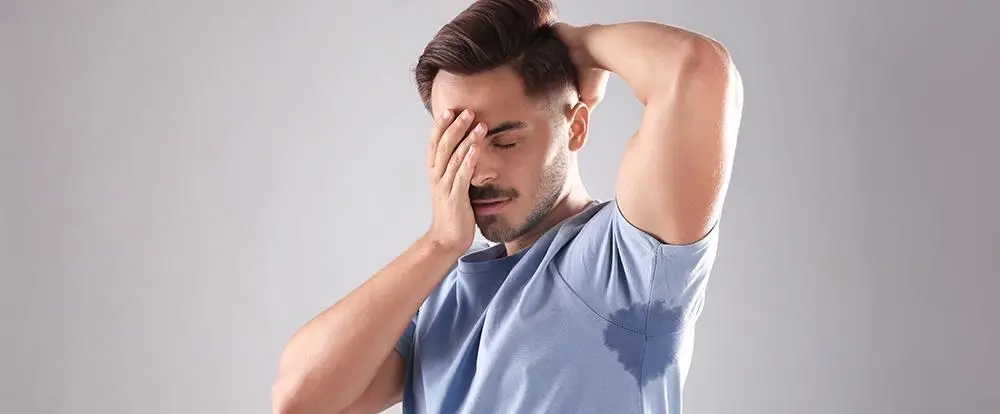

Sweating is a normal function that regulates body temperature. It also helps the excretion of toxins produced in the body. Excessive sweating can be observed in particular conditions, such as exercise, excitement, and stress, although sweating is boosted to regulate body temperature in hot weather.
Sweating - a physiological function of the human body- can be a severe problem for some people. The disease, also known as hyperhidrosis, is manifested by excessive sweating in specific body regions, such as hands, armpits, and feet, without any physical activity, regardless of air temperature. The prevalence of hyperhidrosis is approximately 1% in Türkiye.
Sweating accompanied by dizziness, nausea, or chest pain points to a significant health problem, and you will need to visit your doctor.
There are two types of hyperhidrosis: primary and secondary. There is no definite underlying cause that may lead to excessive sweating in the primary hyperhidrosis, secondary to overactive nerves. Even the factors that cause sweating in normal circumstances may worsen the sweating.
Excessive sweating involves palms, soles, face, underarms, and anterior chest wall. Secondary hyperhidrosis is a medical condition that results in generalized excessive sweating. Secondary hyperhidrosis is most commonly due to diabetes mellitus, menopause, heart attack, cancer, infection, and nervous system disorders.
The treatment of secondary hyperhidrosis involves the management of the underlying cause.
Primary hyperhidrosis is a critical medical condition that imposes a heavy burden on social life. Identifying the underlying cause is the principal diagnostic approach for primary and secondary hyperhidrosis. Final diagnosis may require blood and urine tests as well as imaging studies. Primary hyperhidrosis is diagnosed when no underlying cause can be identified. In the case of secondary hyperhidrosis, the ultimate aim is to prevent excessive sweating by eliminating the underlying cause.
The following options can be used in the treatment of primary hyperhidrosis:
Cream, gel, and sprays: The preferred first-line treatment includes creams, gels, and sprays for excessive sweating in hands and armpits. For therapeutic efficiency, those preparations should be used at a high dose for several times a week. The therapeutic effect may decrease, and the skin may be irritated over time.
Another method is iontophoresis, which is therapy with a low-voltage electric current. It can be used for excessive sweating of hands and feet. This expensive method requires special equipment, and it is very laborious. It cannot be used for people with metal prostheses and pacemakers.
Botox is one of the most commonly preferred treatments for managing hyperhidrosis. This method is used for hyperhidrosis of armpits, hands, and feet; the intent is to deactivate sweat glands by paralyzing sympathetic nerves that regulate sweating by injecting the toxin regionally. This method down-regulates sweating for 6 months, and accordingly, it should be repeated at 6-month intervals. It is a costly method.
The only definitive treatment for hyperhidrosis is surgery. To prevent excessive sweating in the armpits, the skin of the armpit can be surgically removed, or liposuction can be performed. Recently, this surgical modality has yet to be used.
The globally acknowledged method is to place a clip on the sympathetic nerve that transmits the neural signal of sweating. This treatment modality provides a permanent solution. The procedure is called Endoscopic Thoracal Sympathectomy (ETC). Surgery is performed under general anesthesia.
Camera and devices are inserted through one or two axillary incisions (1 cm), and the relevant segment of the sympathetic nerve fibers is clipped. Surgery takes 30 to 60 minutes. The patient is discharged on postoperative day 2. The patient can engage in work and routine daily activities one week later.
Hyperhidrosis is not a disease that you have to consent to. Patients can select the most proper treatment modality and eliminate this annoying physical and social problem by visiting their physician.